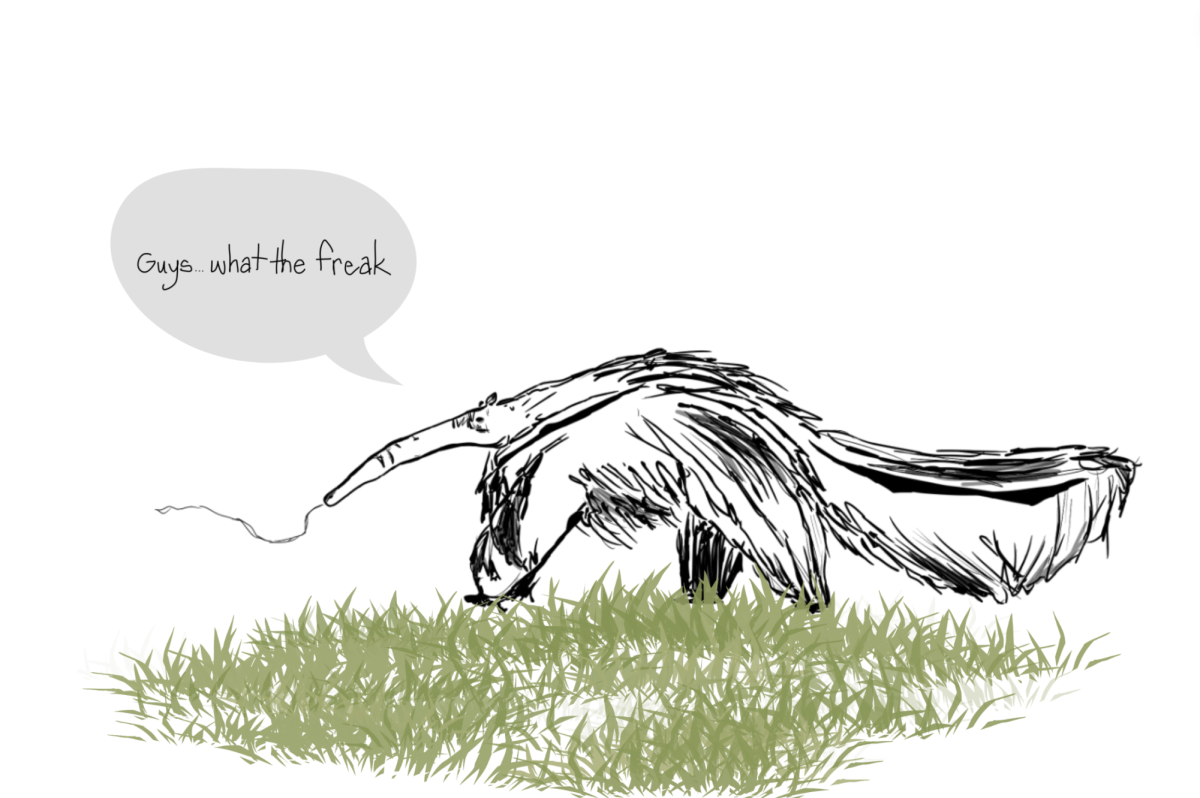Amidst the heart of a lush forest remains a world unseen by many—a world that the giant anteater calls home. These insectivorous gentle giants, native to Central and South America, move with grace and purpose, probing the earth with their elongated snouts in search of tiny treasures. Already considered extinct in Belize, Costa Rica, Guatemala, and Uruguay, these enigmatic mammals have been classified as vulnerable by the International Union for Conservation of Nature (IUCN). Due to habitat destruction, fire, and poaching for fur and bushmeat, only about 5,000 of these beautiful foragers remain in the wild. We need to preserve and protect giant anteaters.
The giant anteater (Myrmecophaga tridactyla) is the largest of the four species of anteaters around today and the only living member of the genus Myrmecophaga. Classified with sloths in the order Pilosa, anteaters have no teeth. They have evolved to not have molars most likely because their ancestors ate worms and other soft-bodied creatures. Unlike most Pilosa species, the giant anteater is mostly terrestrial. Though the giant anteater is preyed on by jaguars and pumas, members of the Pilosa category have sharp front claws, making them capable of potentially killing a jaguar. Still, anteaters typically flee from danger by galloping and stand up on their hind legs to attack when cornered. Giant anteaters tend to live around 15 years in the wild but are capable of living twice that long in captivity because of the lack of predators. The environments of these 25-million-year-old mammals are being destroyed; if their only hope is to survive in captivity, then something is seriously wrong.
The giant anteater feeds primarily on ants and termites, using its claws to unearth them and its sticky tongue to collect them. An anteater’s tongue is two feet long and can flick in and out of its mouth 150 times per minute. The tongue is coated in sticky saliva, allowing the animal to slurp up its food. Giant anteaters can identify the particular species of ant or termite by smelling the nest of the insects before ripping it apart, neat!
Anteaters typically sleep with their tails folded over their body to conserve body temperature, though this behavior can vary—one anteater was recorded sleeping flat on its side with its tail unfolded on a chilly morning, this was assumed to be a way for its body to absorb sun ray’s and keep warm. Giant anteaters also sometimes wade in water to bathe, and are even capable of swimming across wide rivers!
Despite their somewhat well-known status, the giant anteater is studied minimally in the wild, leaving us with limited research in certain departments such as why their braincases are so thick in comparison to other ant-eating mammals. While the giant anteater can see, its sight and hearing abilities are considerably diminished due to the lack of use, as it relies mainly on its sense of smell to find food. Giant anteaters are mostly solitary, excluding the time during mother-offspring relationships. This results in aggressive interactions between male anteaters and during mating. Mother anteaters carry their offspring until they have gradually introduced them to independence.
The giant anteater is also a part of the mythology and folklore of the indigenous peoples of the Amazon basin, being depicted as comical and a trickster because of its irregular appearance. The Kayapo people wear masks of various animals and spirits during naming and initiation ceremonies, some masks being of the giant anteater.
Giant anteaters are crucial to the environment due to their role in controlling insect numbers and creating watering holes with their claws, which are pivotal for both themselves and other species. Without anteaters, there would be significant consequences to the environment, specifically affecting agriculture. Without the anteaters, a new lack of control of insects and pests would emerge, meaning farmers would be forced to spend more on pest control products, which are potentially toxic to other organisms.
Remember that every action you take, no matter how small, contributes to the preservation of the giant anteater’s habitat and the protection of their existence. But it isn’t just the anteaters in danger—there are species in your own backyard that need help, such as the Topeka shiner. This fish could originally be found in 36 counties in Iowa, but now, due to habitat loss and degradation, reduced water quality, and altered stream hydrology, it is confirmed only to be in 16. These minnows are an indicator species, meaning that their presence, absence, or abundance can severely affect the environment. The Topeka shiners can survive in much lower water quality in comparison to other fish species, meaning that if their numbers are low, many other species could potentially be as well.
How can we help this Iowan species? For one, landowners can help with conservation by restoring steam habitat and using certain vegetation along stream banks to prevent erosion and ensure higher water quality. Reducing our use of single-use plastic and properly disposing of trash are also crucial to cleaning up Iowa streams. Protecting endangered species needs to be prioritized in our society, no matter how small the species. In conclusion, raising awareness about these animals is vital, and by understanding and ensuring a brighter future for them, we can increase the quality of our planet as a whole.






























